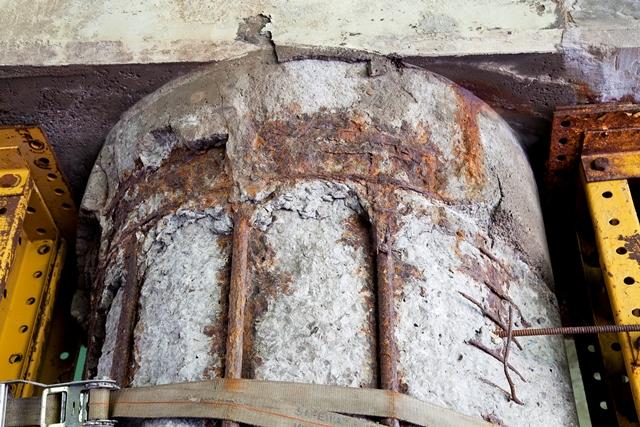Infrastructure owners and managers need to have an asset base that is safe and reliable,
while maintaining acceptable levels of service for the duration of the expected life of the asset.
Part of this management involves ensuring that organisations have effectively trained staff who
understand the risks associated with corrosion and the different preventative and remediation
technologies available, says the Australasian Corrosion Association (ACA).
In the Asia Pacific region, the yearly cost of asset maintenance is estimated to be multiple billions of dollars. Avoidable corrosion damage accounts for a quarter of this and continues to have a major economic impact on industry and the wider community.
The ACA provides training to its members and others working in the corrosion management and prevention sector. Each year the Association presents a range of technical seminars and training courses designed to provide attendees with information and guidance about ways to combat and manage corrosion. Training courses and seminars cover the fundamentals of corrosion control through to more advanced techniques and procedures and professional development can count towards CPD.
Participants will gain the knowledge and tools to offer the most effective solutions – extending the service life of equipment and maximising the use of a facility – to asset owners and managers.
In conjunction with the Australasian Concrete Repair Association (ACRA), the ACA will be running Corrosion and Protection of Concrete Structures and Buildings training at various venues around Australia. This course provides a solid foundation of knowledge about the corrosion of both reinforcement materials and concrete and has been updated to provide an understanding of the mechanisms of corrosion, protection and repair of reinforced concrete structures and buildings. It was developed for those who have the task of resolving the problems of corrosion of steel reinforced, prestressed and post tensioned concrete elements. Training is 4-5 June in Sydney and on 6-7 September Brisbane.
The ACA’s delivery of the NACE Cathodic Protection (CP) 1 and 2 courses are being held this year in Sydney and Brisbane. The NACE CP courses are the world’s most recognised and specified cathodic protection training. The NACE CP Program is a comprehensive program for professionals in any industry including pipelines and bridges, tanks and well casings, the maritime and offshore industries, coated steel and concrete and water and wastewater systems.
CP 1 – Cathodic Protection Tester training provides theoretical knowledge and practical fundamentals for testing on both galvanic and impressed current CP systems. Classroom instruction is comprised of lectures and hands-on training, using equipment and instruments for CP testing. The CP 2 – Cathodic Protection Technician course gives participants both theoretical knowledge and practical techniques for testing and evaluating data to determine the effectiveness of both galvanic and impressed current CP systems and to gather design data. Classroom instruction is comprised of lectures and hands-on training, using equipment and instruments for CP testing.
CP 1 Tester will be conducted in Sydney between 30 April–4 May and Brisbane between 10–14 September.
The CP 2 Technician courses will be held the subsequent week: 7-11 May in Sydney and 17–21 September in Brisbane.
The CP 3 – Cathodic Protection Technologist course builds on the technology presented in the CP2 course with a strong focus on interpretation of CP data, troubleshooting and migration of problems that arise in both galvanic and impressed current systems, including design calculations for these systems. Classroom instruction is comprised of lectures and hands-on training, using equipment
and instruments for CP testing. The course will be held in Brisbane between 24–28 September.
The SSPC Concrete Coatings Inspection course will be run in Melbourne between 9-14 April. The training has been developed in association with the U.S. Society for Protective Surfaces (SSPC) in order to thoroughly train individuals in the proper methods of inspecting surface preparation and
installation of protective coatings on concrete structures and facilities.
This course would benefit Inspectors, contractor managers, specifying engineers, technical representatives and material and equipment suppliers working in the concrete coating industry.
Under guidelines released in 2017 by the Water Services Association of Australia (WSAA), all coatings inspectors who inspect and report on coatings applied to concrete are required to hold SSPC CCI Level 1 or 2 certification. The document – WSA-201 Guidelines for Selection and Application of Protective Coatings – is available from the WSAA website.
Professional development helps you meet the corrosion challenges you face. Places on the ACA and NACE courses are still available and full details and prices can be found at the ACA web site:
www.corrosion.com.au/training
The ACA is a not-for-profit, membership Association and any of its courses can be delivered exclusively ‘in-house’ at a company’s own premises or venue. Courses can also be tailored to a company’s specific needs.
DETAILS, PH: 00 61 3 9890 4833;
E-MAIL: ACA@CORROSION.COM.AU






